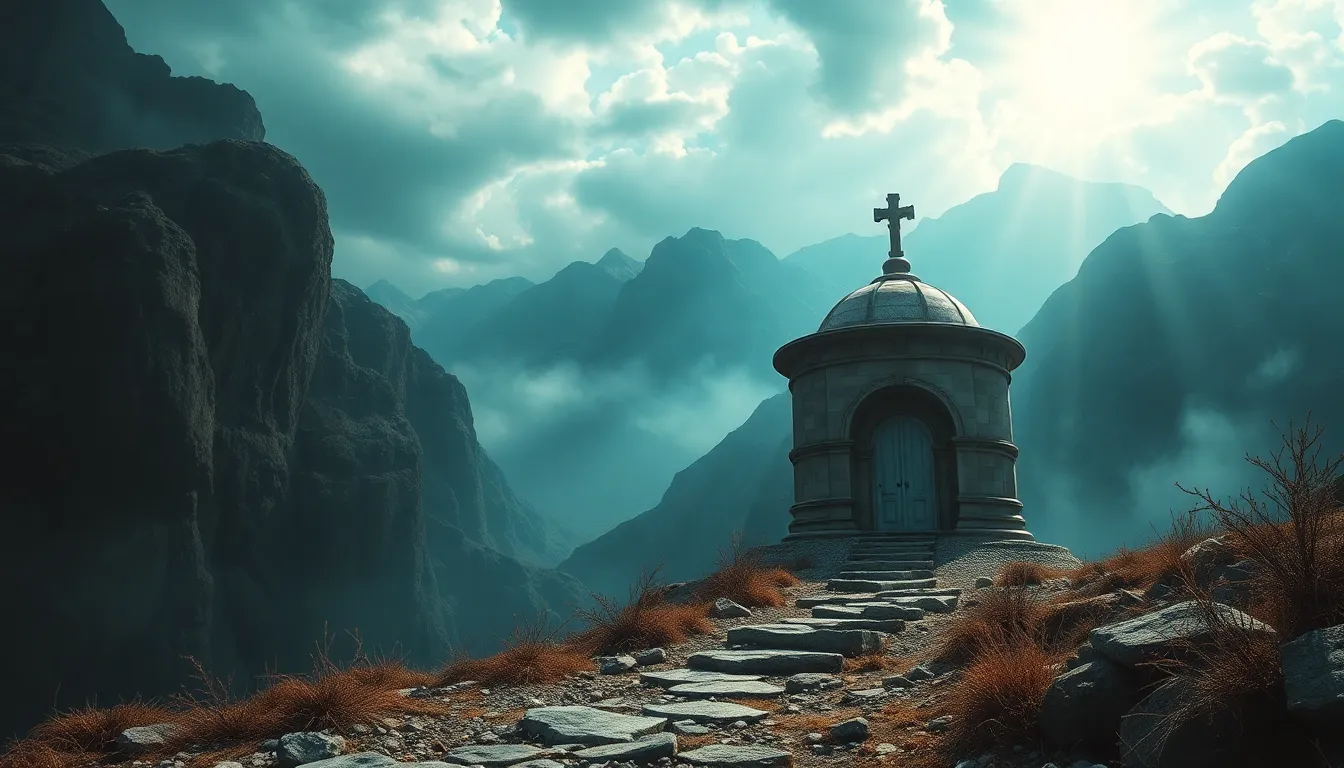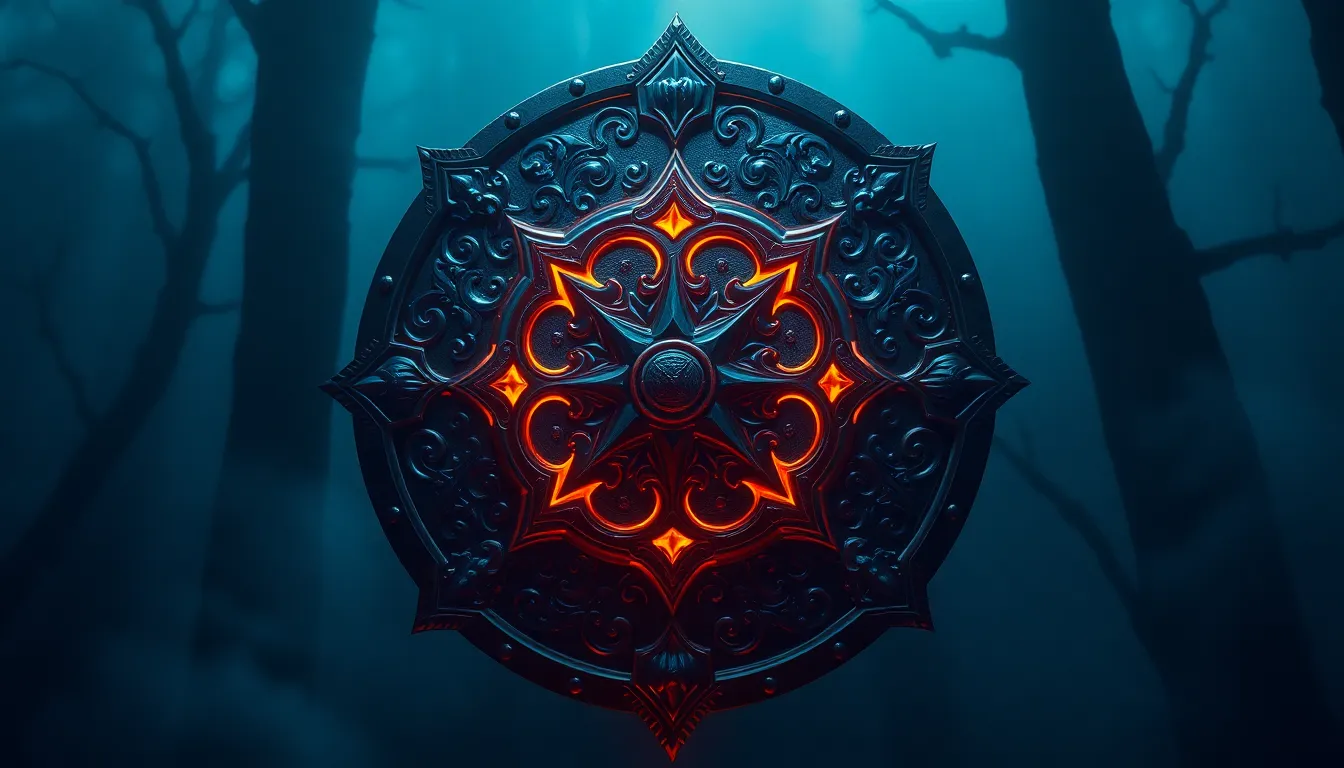The Serpent’s Art: Jörmungandr in Norse Art and Iconography
I. Introduction
In Norse mythology, Jörmungandr, known as the Midgard Serpent, is a colossal sea serpent that encircles the Earth. Born of the trickster god Loki and the giantess Angerboda, Jörmungandr’s significance extends beyond mere myth; it plays a critical role in the cultural and artistic expressions of the Norse people. This article explores the multifaceted representation of Jörmungandr in Norse art and iconography, delving into its mythological significance, literary depictions, and lasting influence on modern interpretations.
II. The Mythological Significance of Jörmungandr
Jörmungandr is a pivotal figure in Norse cosmology, particularly in the myth of Ragnarök, the apocalyptic battle that signals the end of the world. Its significance can be understood through the following points:
- Role in Ragnarök: Jörmungandr is foretold to engage in a cataclysmic battle with Thor, the god of thunder. Their confrontation is emblematic of the struggle between order and chaos.
- Symbolism: As a creature that encircles Midgard, Jörmungandr symbolizes the boundaries of the known world and the chaos that lies beyond.
- Connections: Jörmungandr is linked to other mythological creatures, such as Fenrir, the wolf destined to devour Odin, highlighting themes of familial conflict and chaos.
III. Jörmungandr in Norse Literature
Jörmungandr is prominently featured in primary sources such as the Poetic Edda and the Prose Edda. These texts provide rich descriptions and narratives that illuminate the serpent’s nature and role in Norse mythology.
- Key Sources: The Poetic Edda contains poems like “Völuspá,” which outlines the events of Ragnarök and Jörmungandr’s involvement. The Prose Edda by Snorri Sturluson offers explanations of the myths, detailing Jörmungandr’s origins and fate.
- Textual Analysis: The descriptions of Jörmungandr often emphasize its size and fearsome nature, evoking awe and terror. The imagery used to describe its battles with Thor enhances the dramatic tension inherent in these mythological tales.
- Cultural Impact: Jörmungandr’s portrayal in literature has influenced the perception of serpents in Norse culture, often associating them with danger, chaos, and the unknown.
IV. Iconography of Jörmungandr in Norse Art
The artistic representation of Jörmungandr is found across various mediums in Norse art, showcasing different styles and interpretations.
- Artistic Styles: Norse art is characterized by intricate designs, often featuring interlacing patterns and stylized forms. Jörmungandr is depicted in a variety of forms, from realistic to highly abstract.
- Examples: Jörmungandr appears in carvings on runestones, textiles, and metalwork. Notable examples include the Jelling stones in Denmark and the Oseberg ship burial artifacts, where the serpent is depicted in elaborate detail.
- Interpretation: The visual representations of Jörmungandr often serve as a reminder of the duality of nature—its beauty intertwined with its potential for destruction.
V. The Serpent in Viking Age Artifacts
Numerous Viking Age artifacts featuring Jörmungandr themes provide insight into the beliefs and values of the Norse people.
- Discoveries: Archaeological finds include jewelry, weaponry, and decorative items that feature serpentine motifs. These artifacts often illustrate Jörmungandr in various contexts, emphasizing its significance in Viking culture.
- Significance: The presence of Jörmungandr in these artifacts suggests a reverence for the serpent as a symbol of power and protection. It reflects the Viking belief in the cyclical nature of life and death.
- Case Studies: The discovery of the Silver from the Viking Age, featuring intricate designs of Jörmungandr, exemplifies how artisans incorporated mythology into their work, influencing both functional and decorative items.
VI. Jörmungandr’s Influence on Later Art and Culture
The legacy of Jörmungandr transcends the Viking Age, influencing medieval and modern art and culture.
- Legacy: Jörmungandr’s imagery has been adopted in various forms of medieval art, often symbolizing chaos and the unknown. Its representation in illuminated manuscripts and tapestries reflects its enduring impact.
- Contemporary Adaptations: Today, Jörmungandr is featured in literature, films, and video games, often reinterpreted as a symbol of strength and resilience. Popular media has embraced its mythos, bringing it to new audiences.
- Modern Symbolism: In contemporary interpretations, Jörmungandr often embodies themes of environmentalism and the balance of nature, highlighting humanity’s relationship with the natural world.
VII. Comparative Analysis with Other Mythological Serpents
Jörmungandr’s representation can be compared with serpentine figures from other cultures, revealing both parallels and distinctions.
- Similarities: Many cultures feature serpents as symbols of chaos, destruction, or rebirth. For example, the Aztec deity Quetzalcoatl and the biblical serpent in the Garden of Eden share thematic elements with Jörmungandr.
- Differences: Jörmungandr’s unique role as a boundary guardian sets it apart from other serpents, as it specifically represents the tension between order (Midgard) and chaos (the ocean).
- Thematic Parallels: Across cultures, serpents often embody the duality of creation and destruction, reflecting the complex nature of existence.
VIII. Conclusion
Jörmungandr’s significance in Norse art and iconography is profound, symbolizing the intricate relationship between chaos and order in the cosmos. Its representation in literature, artifacts, and modern interpretations highlights the enduring legacy of the Midgard Serpent, illustrating the timeless nature of myth and its relevance in contemporary culture. As we reflect on Jörmungandr, we recognize that it serves not only as a mythical creature but also as a symbol of the complexities of life, death, and rebirth.
https://www.youtube.com/watch?v=CDVekDD2uxo
![]()


